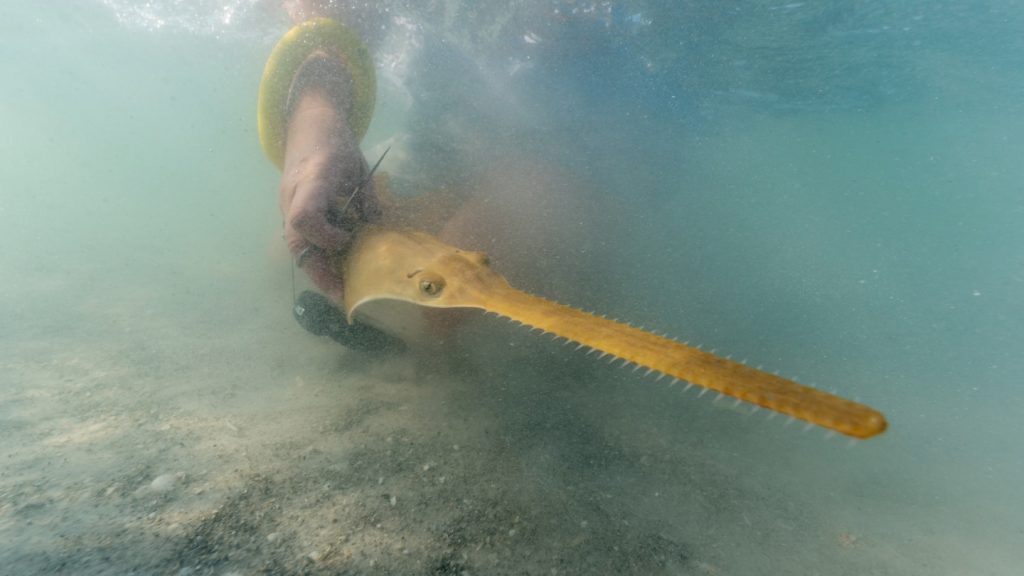Smalltooth sawfish are equipped with a unique adaptation even before they are born: a specialized sheath that encases their needle-sharp teeth. This structure serves to protect the mother from harm during gestation and protects the siblings from inadvertently injuring each other with their teeth. Researchers were able to study this built-in pocket protector up close for the first time, revealing its protective properties.
The sheath of the smalltooth sawfish was previously believed to be a delicate, gelatinous membrane, but observations of baby sawfish and laboratory analysis of tissue samples have shown that it is actually a tough, multilayered “second skin.” This sheath sheds within four days after birth, providing further protection to the young sawfish. The findings overturn previous assumptions about the nature of the sheath and highlight its importance in shielding the sharp teeth of the sawfish.
The smalltooth sawfish, scientifically known as Pristis pectinata, is a rare species found mainly in waters off South Florida and the western Bahamas. It took researchers nearly two decades of research trips to collect tissue samples of the sheath due to the species’ scarcity. The sheath has a unique texture similar to paraffin wax, firm yet slightly yielding. The research utilized various techniques such as histology, scanning electron microscopy, micro-CT, and elemental analysis to understand the composition and structure of the sheath.
The analysis of the sheath samples revealed two tissue layers resembling an epidermis and dermis, as well as proteins resembling keratin, reticulin, and collagen. These findings suggest that the sheath functions as a second skin, serving as a protective barrier for the smalltooth sawfish. Although further research is needed to confirm these observations, the study provides valuable insights into the species’ life history and behaviors. The smalltooth sawfish is critically endangered due to factors such as habitat loss and accidental entanglement in fishing nets, making this research crucial for conservation efforts.
Despite the efforts towards the recovery of smalltooth sawfish populations in recent years, a mysterious die-off in Florida’s Lower Keys is posing a new threat to the species. Dozens of sawfish have died in this event, prompting researchers to investigate the causes of the mortality. Understanding and addressing the factors contributing to the decline of smalltooth sawfish populations is essential for their conservation. The ongoing research aims to provide valuable information that will help protect this endangered species and ensure its survival in the wild.















